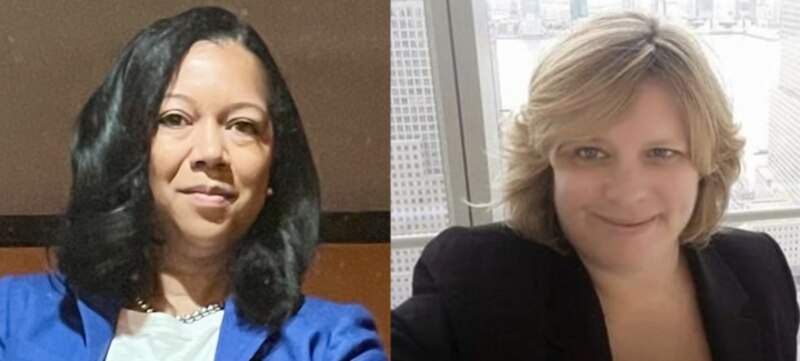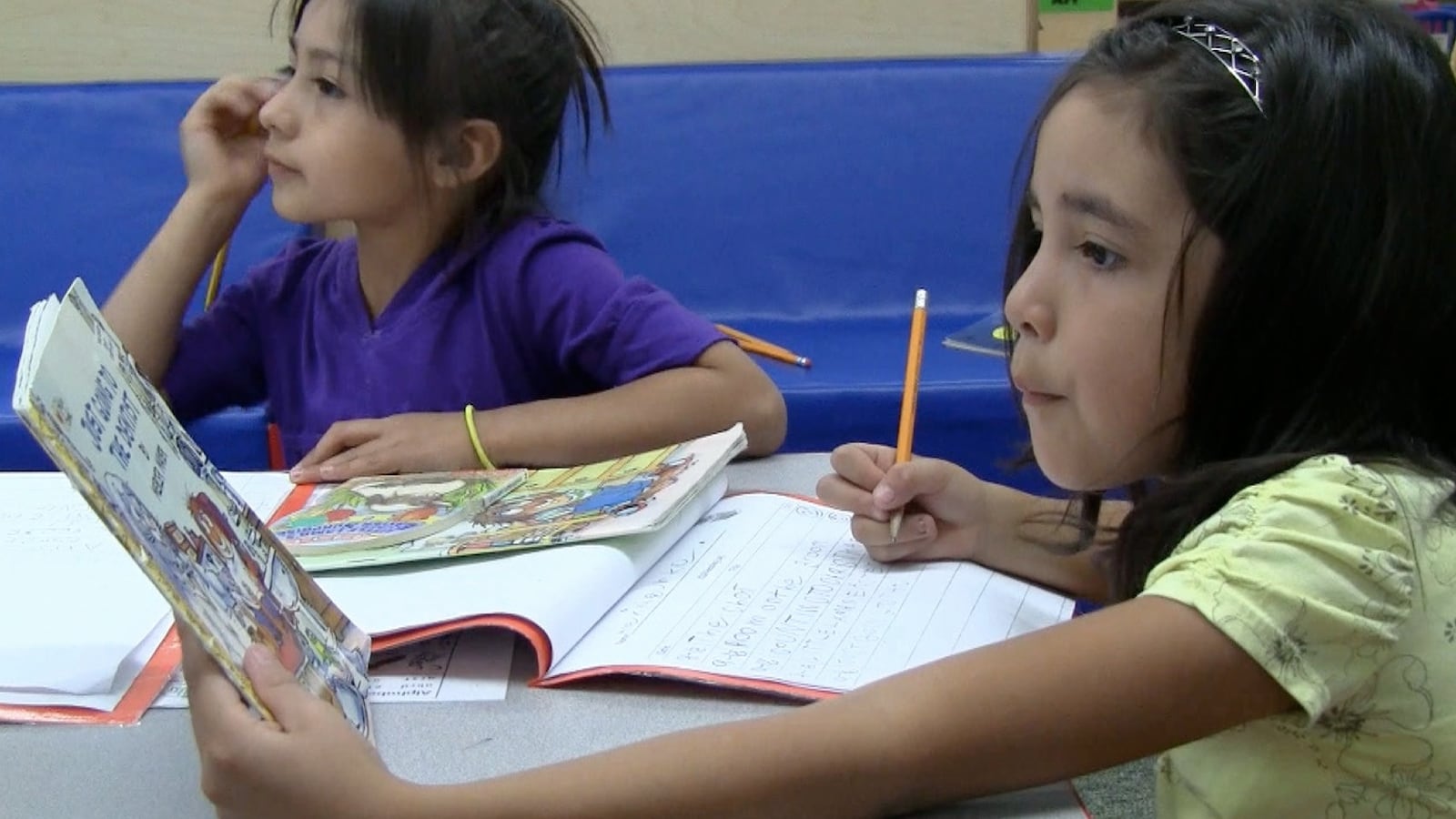Sign up for Chalkbeat New York’s free daily newsletter to get the latest news on NYC’s public schools.
Reading scores are in crisis. Instruction is uneven at best. Can a plan to change curriculum at all New York City public schools help more students become proficient readers?
We believe it can.
As district superintendents who oversee more than 80 schools combined in Brooklyn and the Bronx, we have seen firsthand how a well-chosen reading curriculum can spark and hold students’ interest, sharpen instruction, and shape classwork that builds confidence and literacy alike. In our schools, reading lessons build foundational skills, vocabulary, critical thinking, and a bank of background knowledge that connects students to one another and prepares them for lifelong learning.

It wasn’t always so. A few years ago, too many of our students were not reading at grade level, and despite extra help and the hard work of teachers, too few were ever catching up. In the “balanced literacy” approach our schools were using, students were spending a lot of time reading independently, which meant reading books that were often two and three grade levels below where they needed to be. They were almost never exposed to high-quality texts at the right grade level, and they weren’t getting enough explicit instruction in the building-block skills that would accelerate their progress.
In each of our districts, we gathered our principals together, compared our school-based data to state test scores, and had a tough moment of reflection. It was time to change how we taught reading and what materials we used to teach it.
This is the moment where our colleagues across the city currently find themselves. Under the “New York City Reads” campaign, every local district leader is required to choose one of three reading curriculums and see that it is implemented at every school they oversee. About half of the districts began using one of the selected curriculums this fall, and the other half will do so in 2024. The city has committed funding to support training and coaching for teachers, many of whom will be teaching new materials and in a new way.
We are excited that the city has embraced the same approach to reading instruction that we chose for our respective districts four years ago. This course correction comes decades after what Banks rightly described as “overlapping, contradictory, and sometimes just flat-out bad guidance.”
The transition won’t be easy.
Changing curriculum can be complicated and uncomfortable. It means adopting new materials, new lesson plans, and new expectations for teachers and students. Forcing educators to make these changes on the campaign’s timeline and according to its rules will be especially tough in New York, where individual principals have long held authority over instruction and many teachers curate or create their own materials. It’s hard to find time on busy school calendars to give teachers the training and practice they need to make the transition.
But take it from us: It’s worth the effort.
Our districts use two of the three curriculums approved by the city: District 19 in Brooklyn, which Dr. Collins leads, uses Wit & Wisdom, and District 11 in the Bronx, which Ms. Vaughan leads, uses Expeditionary Learning. We chose these curriculums, together with our principals, because they are designed with cognitive science in mind. They present carefully sequenced informative and narrative texts, which students use to build confidence and a foundation of knowledge to make inferences and accelerate future learning.
Throughout the school year, classes delve into a complex, high-interest topic, like immigration in elementary school or the Harlem Renaissance in middle school. Over several weeks, lessons follow a sequence where students encounter and use vocabulary and content knowledge to investigate different aspects of the topic, read related fiction and nonfiction texts, and follow discussion and writing prompts to connect what they are learning to their own experiences. Students still spend some time reading independently at their skill level, but they also receive explicit, personalized phonics instruction that draws on the “science of reading.” And during whole-class read-alouds of grade-level texts, students can join in or, if they are not yet ready, listen and follow along.
Because everyone is reading, thinking, and writing about the same topic, students of all skill levels can learn and work together. Every student gets a daily dose of grade-level text, including teacher-provided support for a just-right reach above their comfort zone. And they promote equity in city schools, where nearly two-thirds of Black and Hispanic students fail reading tests, compared to about one-third of white and Asian students.
We see the power of this approach whenever we visit a classroom. For example, at P.S. 169 in the Bronx, we listened as an energetic second-grade class read, talked, and wrote about bats. It was part of a longer unit about pollinators, which began with students reading fables and folktales about butterflies and visiting a local botanical garden. They then read a nonfiction book about bats, which included pictures, captions, and a glossary so students of various skill levels could engage with the second-grade text.
We’ve seen the joy and excitement in our classrooms, where students are rising to the challenge.
On the day of our visit, students gathered on the classroom rug to read or listen to an opinion essay about why protecting bat homes is important. In pairs and a whole-class discussion, they discussed the author’s point of view and explored detailed questions about the importance of safety and sleep for bats and people alike, using vocabulary words like “sensitive” and “hibernate.” Then, back at their desks, they wrote responses to research questions based on the piece. Some students worked with a partner, some on their own, and some worked with the teacher or a special education aide to transcribe their responses.
It was a hot and sunny morning at the end of the school year, but students were engaged and connected to a specific, shared learning goal. The lesson concluded with students’ reflections on whether bats are in need of protection. As pollinators, the class decided, they are.
These types of learning experiences are not easy to create. Four years in, we are still refining our instruction, and in the wake of pandemic interruptions, reliable performance data is not yet complete. But we do know that our teachers have benefitted from professional coaching, which the city’s funding makes available to districts changing curriculum in the coming year. And we’ve seen that working with a shared curriculum across school buildings throughout our districts fosters deep connections among teachers.
Most dramatically, we’ve seen the joy and excitement in our classrooms, where students are rising to the challenge and enjoying what educators like us call the “productive struggle.” As Jasmine, a student at P.S. 325 in Brooklyn, put it, “If I stick to the stuff that I know, how am I going to learn? If I stick to the stuff that I don’t know, I’ll be able to learn new things, my brain is going to get to know more information, and I’ll get better at more things that seem hard to me.”
All students deserve the chance to become proficient readers. Now, all schools can deliver on that promise.
Tamra Collins is New York City Department of Education Schools Superintendent of District 19 in Brooklyn and Cristine Vaughan is New York City Department of Education Schools Superintendent of District 11 in the Bronx.



